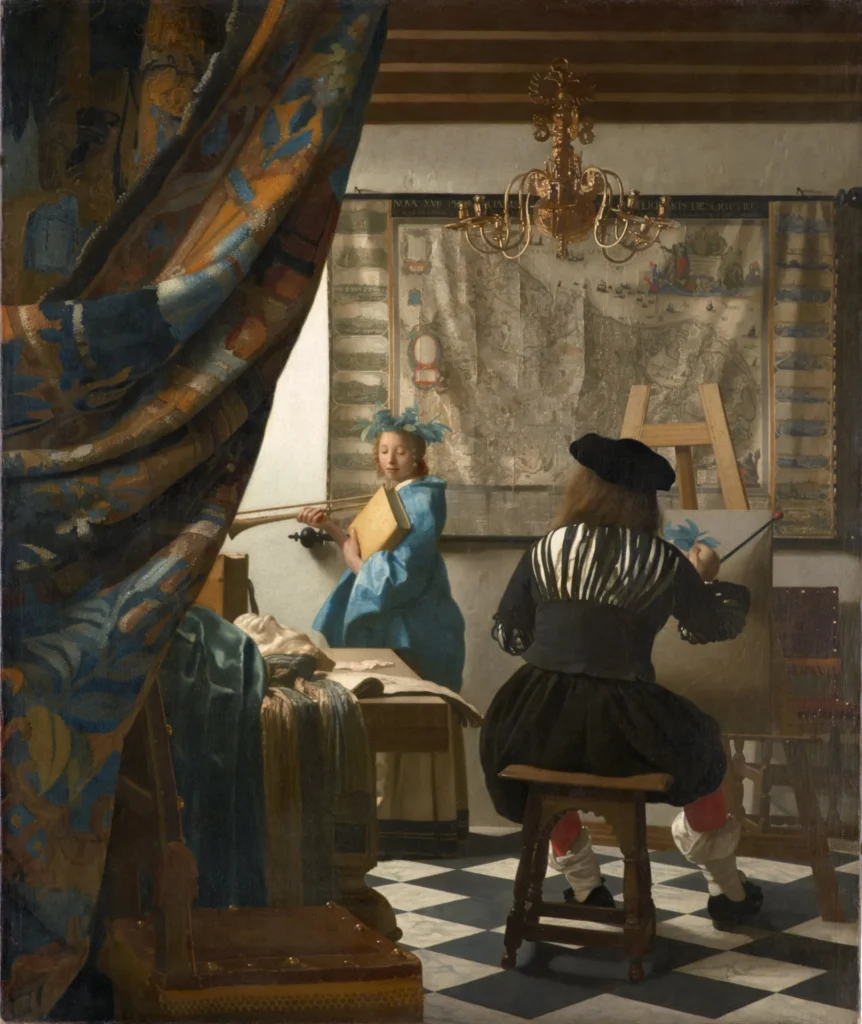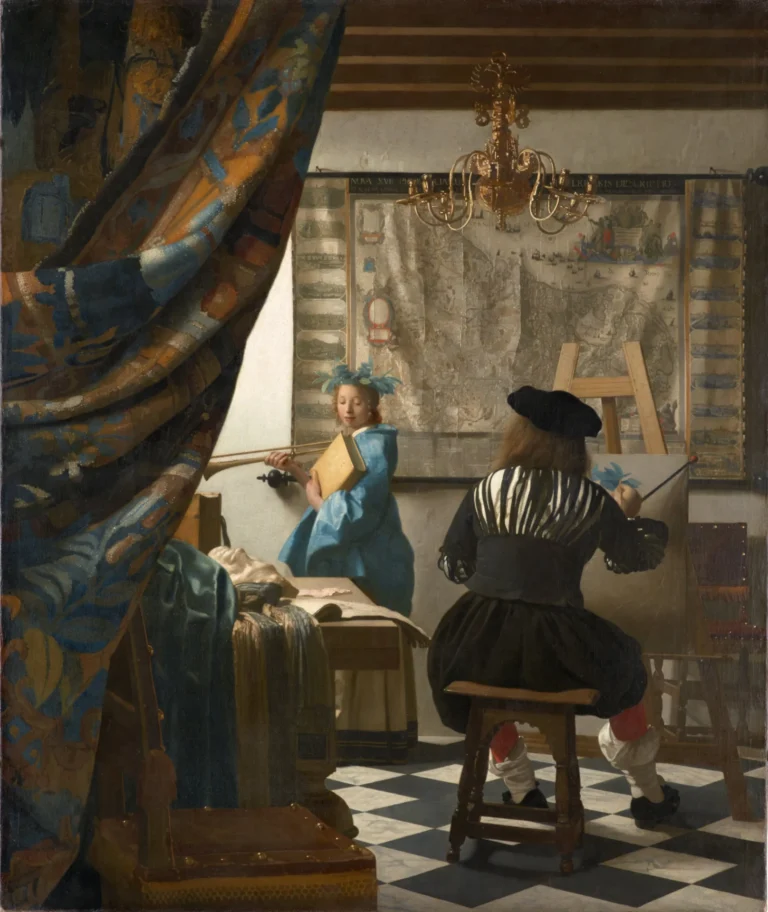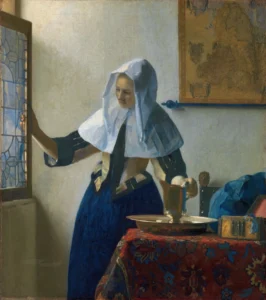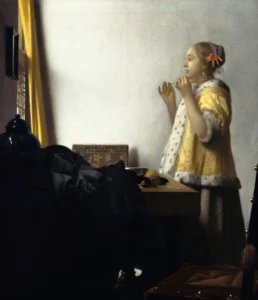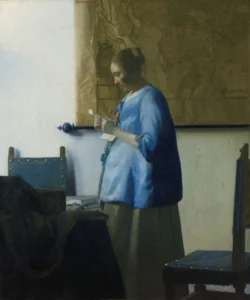The Art of Painting
The Art of Painting by Johannes Vermeer captures a moment in a vibrant studio, where an artist paints a young woman embodying Clio, the Muse of history. This late 17th-century artwork reflects the essence of the Dutch Golden Age through its intricate detailing, brilliant use of light, and masterful composition. The interplay between the historical significance of Clio and the artist's skill evokes a deeper appreciation of painting as a vital connection between past and present, revealing Vermeer's awareness of the socio-political context of his time.
1666 - 1675
About the Artwork
Painted between 1666 and 1675, The Art of Painting has an intriguing narrative that intertwines Vermeer's life and artistry. The woman in the painting, interpreted as Clio, suggests a duality - she represents both the act of painting itself and the broader historical context that art occupies. The outdated map on the wall prompts viewers to think about the passage of time and the role of artists as historians of their era. Vermeer showcases his expertise through meticulous detail and the spacious interior, further indicating the significance of place and context in the artwork. This painting remained in Vermeer's possession until his death, passing through familial ties and even falling into the hands of Hitler before being recovered, marking it as a piece of both artistic continuity and historical turbulence.
Did You Know
Liked what you see? Add it to your collection.
Enjoyed reading? Share it.
... continued
Creation and Date
The painting is believed to have been created between 1666 and 1668, although some experts suggest it could have been completed as late as 1670-1675.
Composition and Elements
The painting depicts an artist, often speculated to be Vermeer himself but not confirmed, painting a young woman who is posing as a model in his studio. The woman is identified by her attributes as Clio, the Greek Muse of history, wearing a laurel wreath, holding a large book, and with a trumpet nearby, symbolizing honor, history, and fame.
Symbolism and Allegory
The painting is widely interpreted as an allegory of painting itself. It highlights the artist's role in society, the connection between art and history, and the importance of the artist's skill in capturing and preserving moments of time. The use of the map and the chandelier refers to historical and cultural contexts, emphasizing the artist's awareness of history and his contribution to it.
Technical Mastery
Vermeer's technical skills are evident in the painting's use of perspective, the manipulation of light, and the detailed rendering of textures. The painting features a vanishing point near Clio's hand, guiding the viewer's gaze. Vermeer also used pinholes and strings to achieve precise linear perspective, a technique visible in many of his works.
Provenance
The painting remained in Vermeer's possession throughout his lifetime and was passed down to his widow, Catharina Bolnes, after his death in 1675. To avoid creditors, she transferred ownership to her mother, Maria Thins. The painting was later purchased by Count Jaromir Czernin and briefly owned by Adolf Hitler before being recovered by the U.S. Army after World War II. It is now part of the collection at the Kunsthistorisches Museum in Vienna.
Significance
The Art of Painting is one of Vermeer's largest and most complex works, showcasing his extraordinary technical mastery and his ability to integrate naturalistic technique, brightly illuminated space, and a complex composition. It stands as a summary and assessment of Vermeer's artistic achievements and is considered one of the most perfect paintings in the history of art.




